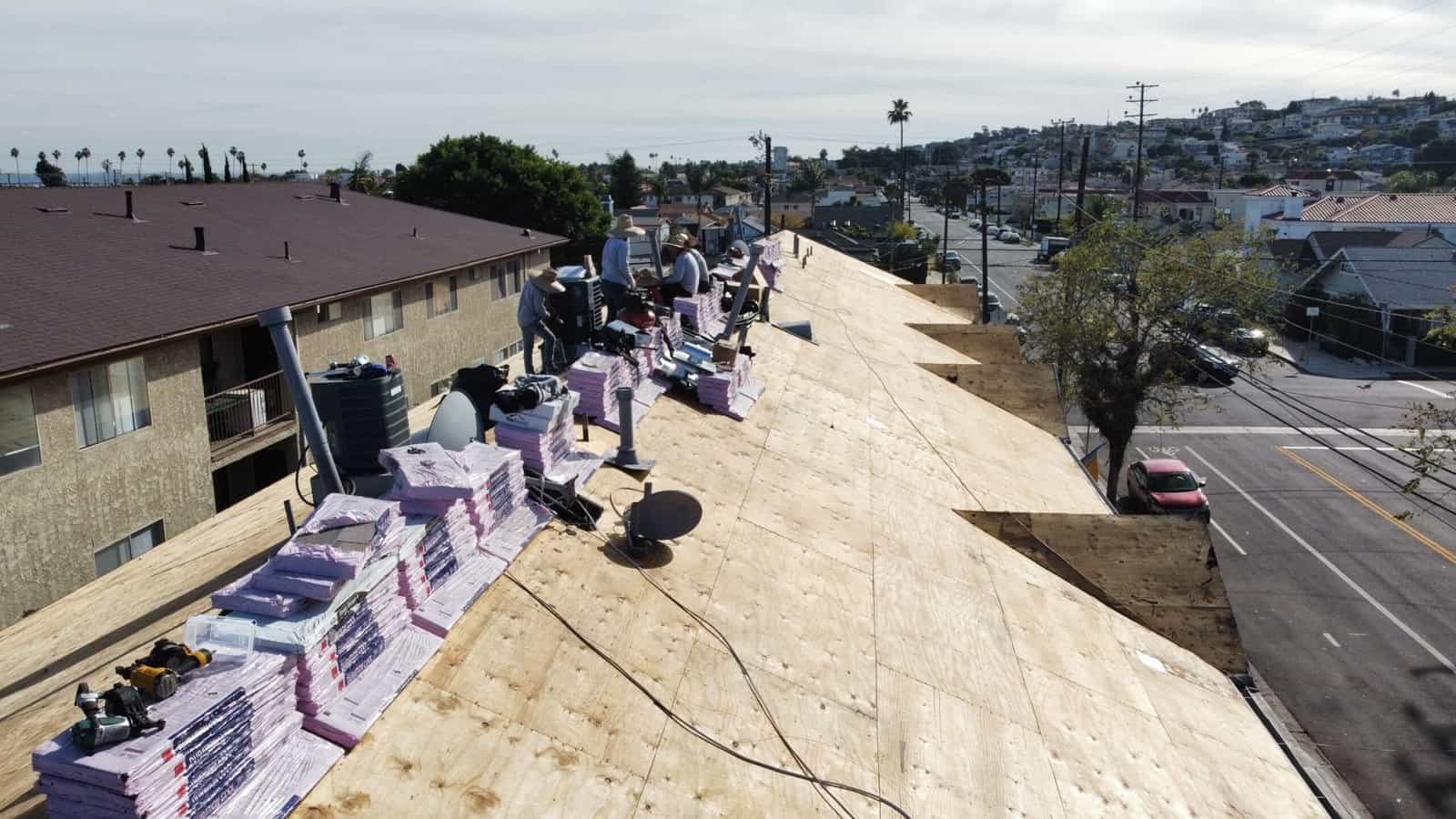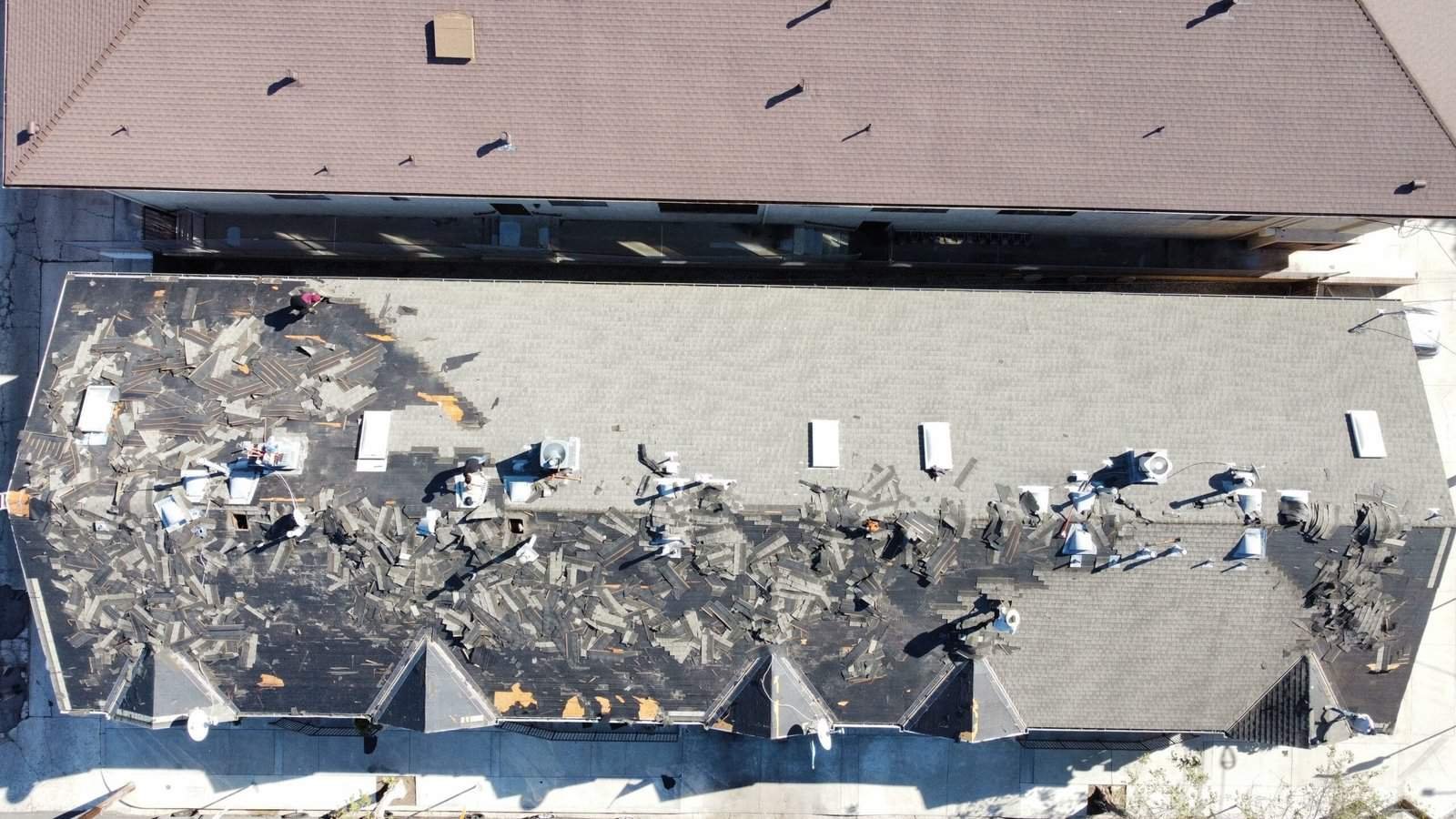Roof Leaks
Roof leaks are no laughing matter; in addition to being inconvenient and irritating to deal with, they can also harm your home’s structural integrity. Mould may begin to grow in your home. that means of persistent roof leaks, which could have negative health effects. You need a fast and simple fix to stop the leaking roof if the weather is too terrible to have a contractor out or if you don’t have the funds to pay a professional house roofer right now.
Table of Contents
ToggleWater marks that cover ceilings or trickle-down walls are likely the result of a leaking roof. Finding the leak is difficult; fixing a roof leak is typically not too difficult.
There is never a moment to waste when it is raining inside your home. Even though you might not always be able to repair a leaking roof on your own, you can take precautions to lessen the harm—and the cost of repair. 
How to Stop a Roof Leak in the Rain:
1. Identify the source
You must understand what is enabling rainwater to enter your property to stop a ceiling from leaking due to rain. By doing this, you’ll save effort and cost on the tools necessary for restorations and repeated leak fixes.
Check your rooftop first to be sure there are no other issues, and only rain leaks, there. Clogged gutters, rodent infestations, and problems with the plumbing, heating, and air systems are additional possible reasons for leakage.
Look for any harm to the plasterboard and tiling in your ceilings and roof. Leaks could frequently develop in the places you evaluate if there is a shortage of parallelism.
2. Clean up the area
You can get the space ready for fixes once you know where the leakage is originating from. You can prevent roof leak destruction by cleaning up the spot where water might enter and find out immediately if a leakage is there.
You might arrange tubs to capture any more water flowing through the rooftop and clean the moist area underneath the leak. For leaks that are flowing through the flooring over you, vacuum hoses are useful.
Don’t forget to relocate any equipment and furnishings that are blocking the leak. Wrap the furniture with plastic coverings to keep it dry if it’s too big or hard to move.
3. Put tar on the roof
You must evaluate your home’s exterior before discussing how to carry out roof tile repair for a leaky rooftop from within. Maintaining the condition of the roofing tiles is one approach to achieve this.
The best solution in this case is roofing tar patching, which work well with detachable tiles. It is possible to identify interior leaks by removing the panels, and an inside ceiling leakage can be fixed with roofing tar.
A tile or chunk of plywood can be used as reinforcement for roofing tar to improve its performance. To keep the place dry, press a tile or piece of plywood up against the leaky area. Then, add roofing tar.
4. Employ PE Plastic
Some concealing materials work well for leaks whose source is more difficult to locate. Polypropylene (PE) plastic is a prominent example, which can reduce the quantity of space damaged by leaks and can collect fluid that is attempting to enter.
To determine how much PE plastic, you need to fill the leaky spot, all you need is a ruler. Giving your plastic 3 to 4 extra feet is recommended to prevent leaks as much as you can in the future.
The plastic should then be nailed in place after being stapled to the surface. To protect your rooms from as much liquid as possible, keep your PE material as strong as you can.
5. Set up new shingles
How well your rooftop can stop a leak also depends on the state of your shingles. Curls, bruising, and missing pieces on your tiles make it simpler for rainwater to enter your house externally.
Wear the appropriate protective gloves when dismantling older tiles to prevent wounds. Put on work boots before ascending the ladder to the leaky location to prevent sliding.
With a straight cut and a hammer’s screw remover hook, remove the old and damaged tiles, then replace them with screws and roof tar. This works much better as a stopgap measure until you locate a more reliable rain protection.
6. Put tarps to use
Some of you could be anticipating a storm tomorrow and require an urgent roof leak repair. Installing a tarpaulin over areas where you think there may be leaks from the outside is one option.
The number of leaks you have, and the diameter of your roof may determine the size of the tarpaulin you utilize. For a rooftop that is too big for only a few leaks and leaks in several places, using several tarps is helpful.
7. Seal Joints
If a roof leakage originates from a seam on your rooftop, your odds of coping with it may be increased. Rainwater can get into your house via cracks, as well as via aluminium and chalk flashing where walls meet. You can close off these spaces, which frequently contain chimneys and valleys, using roof glue or sealer. Prior to putting the sealer, ensure sure the surface is completely dry and has no debris.
How to repair a leaky roof
A serious issue such as a leaky roof can result in several quickly compounding internal property problems, such as wet attic insulation and damaged floorboards. Preserving your property requires fixing a leaking roof.
Repairing a leaky roof requires a lot of work and is not for everybody. However, if you’re up for the challenge, it’s quite cheap and has a big pay-out in terms of protecting the price of the property.
This is the process of repairing a leaky roof:
1. Track Down the Roof Leak
- Review the Roof Vents
- Dispose of the damaged roof vent
- Change the roof vent
- Remove rusted roofing shingles
- Take Off the Previous Roofing Paper
- Identify the Deck Cut Area and Remove the Damaged Roof Deck
- Cut a new roof deck after removing the old one.
- Fix the Roof Deck Patch.
- Put Paper or Underlayment
- Run the First Shingle Row
- Finish the shingles
How to fix an emergency roof leak
- To stop the leak, use a tarp.
- To repair the roof or flashing, use roofing cement.
- Caulk or silicone can be used to stop the leak.
- Stop the leak by using a rubber sealing covering.
- Cover the leaky roof spot with roof flashing to prevent further damage.
- Raise the shingles
- Create a new shingle.
- Exchange the roofing pipe flashing cap
All these techniques can be used to make an urgent roof repair, but you shouldn’t rely on them to provide long-term fixes. Call a reliable roofing contractor as quickly as you can to come assess your roof.

When to call a professional roofer
The lifespan of your roof might range from 20 to 50 years, based on its type. That lengthy longevity, however, comes with a substantial amount of care. You can’t let your roof go to waste, and there are several situations in which you should contact a nearby roofing expert.
- A noticeable leak in the attic is a solid indication that your roof needs to be repaired or replaced. A crucial part of your home care program should include routinely inspecting the attic for indications of deterioration.
- Paint that is cracking or peeling in or out of the house, or water smudges: One of the many reasons why paint starts to flake, or peel is a roof leakage.
- Upholstery that is saturated with water may cause a dramatic increase in your home’s energy bills. Insulation can’t function correctly when it gets wet from a leaking roof. As a result, maintaining your home’s climate may lead to an increase in energy bills.
- Gutter filled with granules. A pile of shingle particles in your gutters is a definite indication that your roof is getting close to its end of life.
- Damaged or missing tiles. Your roof might sustain damage from the weather. Contact your roofing crew immediately if any of your tiles have been damaged.
- Leaky roof. If your roof is drooping, get in touch with us right away. Sagging is a sign that water deterioration to the roof’s structural system has occurred. It’s critical to fix this right away.
- A roof leak could be the source of moisture absorption in the property that manifests as mould or fungus.
- Age of the roof: If your roof is getting close to 20 years old, it’s time to schedule a consult with a roofing expert.
If you observe any of these indicators, it’s time to call your roofing experts to set up an appointment. Don’t wait until your small roof damage turns into a big issue. For more than 20 years, Golden Coast Roofing has offered top-notch roofing services. Make an appointment for your free roofing consultation right away.
Frequently Asked Questions
What are the initial steps to take when dealing with a roof leak?
When you discover a roof leak, the first step is to identify the source of the leak. This involves inspecting your roof and ceilings for any signs of damage, such as water marks or damaged plasterboard. After locating the leak, clean up the area to prepare for repairs. This includes removing or covering furniture and placing containers to catch dripping water. It's important to act quickly to prevent further damage to your home.
Can I temporarily fix a roof leak by myself, and how?
Yes, there are temporary fixes you can do by yourself to manage a roof leak. These include applying roofing tar to the affected area, using PE plastic to cover the leak, or setting up new shingles where the old ones are damaged. In emergencies, using tarps to cover leak-prone areas can also help. However, these are temporary solutions, and it's important to contact a professional roofer for a permanent fix.
When should I call a professional roofer instead of trying to fix the leak myself?
You should call a professional roofer if the leak is severe, if you're unable to identify the source, or if the leak is associated with structural damage. Other indicators include visible attic leaks, peeling paint, water-soaked insulation, granules in gutters, damaged or missing tiles, a sagging roof, or the presence of mold or fungus. Additionally, if your roof is nearing the end of its lifespan, typically around 20 years, it's advisable to consult a roofing expert.
